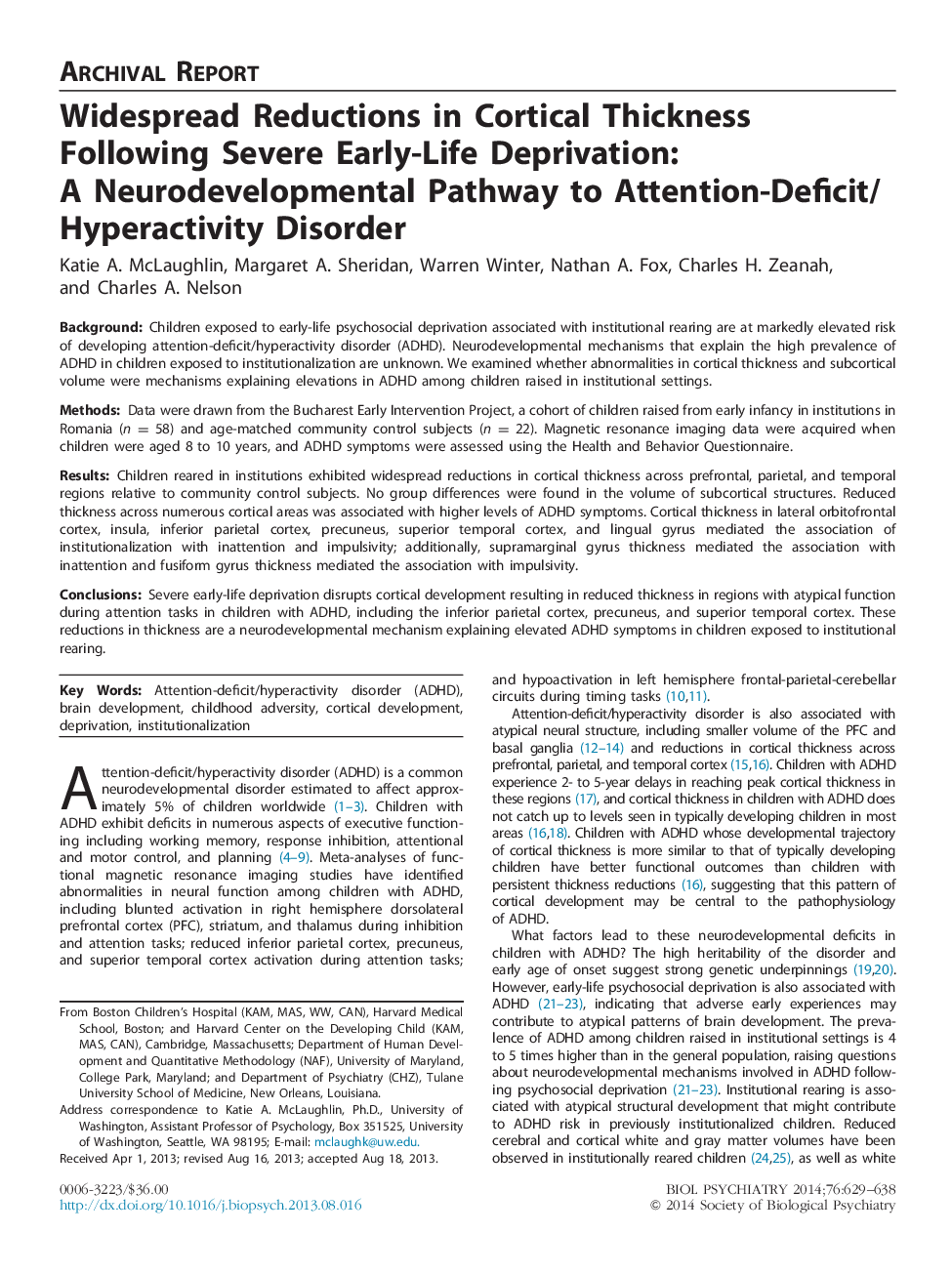| کد مقاله | کد نشریه | سال انتشار | مقاله انگلیسی | نسخه تمام متن |
|---|---|---|---|---|
| 6227214 | 1276437 | 2014 | 10 صفحه PDF | دانلود رایگان |
BackgroundChildren exposed to early-life psychosocial deprivation associated with institutional rearing are at markedly elevated risk of developing attention-deficit/hyperactivity disorder (ADHD). Neurodevelopmental mechanisms that explain the high prevalence of ADHD in children exposed to institutionalization are unknown. We examined whether abnormalities in cortical thickness and subcortical volume were mechanisms explaining elevations in ADHD among children raised in institutional settings.MethodsData were drawn from the Bucharest Early Intervention Project, a cohort of children raised from early infancy in institutions in Romania (n = 58) and age-matched community control subjects (n = 22). Magnetic resonance imaging data were acquired when children were aged 8 to 10 years, and ADHD symptoms were assessed using the Health and Behavior Questionnaire.ResultsChildren reared in institutions exhibited widespread reductions in cortical thickness across prefrontal, parietal, and temporal regions relative to community control subjects. No group differences were found in the volume of subcortical structures. Reduced thickness across numerous cortical areas was associated with higher levels of ADHD symptoms. Cortical thickness in lateral orbitofrontal cortex, insula, inferior parietal cortex, precuneus, superior temporal cortex, and lingual gyrus mediated the association of institutionalization with inattention and impulsivity; additionally, supramarginal gyrus thickness mediated the association with inattention and fusiform gyrus thickness mediated the association with impulsivity.ConclusionsSevere early-life deprivation disrupts cortical development resulting in reduced thickness in regions with atypical function during attention tasks in children with ADHD, including the inferior parietal cortex, precuneus, and superior temporal cortex. These reductions in thickness are a neurodevelopmental mechanism explaining elevated ADHD symptoms in children exposed to institutional rearing.
Journal: Biological Psychiatry - Volume 76, Issue 8, 15 October 2014, Pages 629-638
